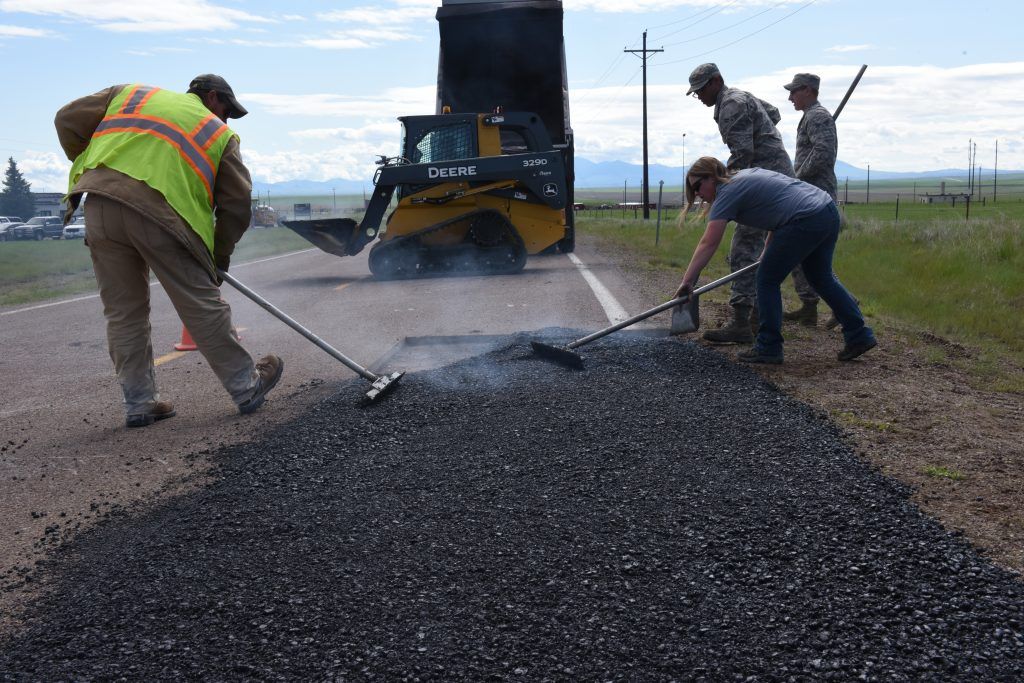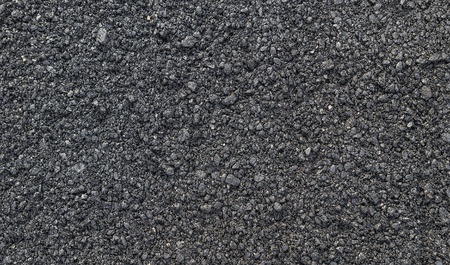Experience the Difference: Hot Mix Asphalt Paving for Regrading Projects
Wiki Article
Opening the Tricks of Hot Mix Asphalt Technology
Checking out the midsts of warm mix asphalt modern technology reveals a globe where precise solutions and meticulous procedures converge to form our roads and framework. The fusion of aggregates, fillers, and binders isn't merely a building job but a critical orchestration of toughness and efficiency. As we peer into the complex dance of parts, a tapestry of resilience and sustainability unravels. What exists under this surface of asphaltic proficiency, and what keys wait to be revealed in the world of leading advancements?Value of Hot Mix Asphalt
Warm Mix Asphalt plays an essential function in modern facilities growth as a result of its resilience and cost-effectiveness. As one of the most typically utilized paving material for roadways, highways, and parking area, Hot Mix Asphalt supplies a variety of advantages that add to its importance in building tasks. One crucial benefit is its capacity to endure heavy website traffic tons and extreme weather problems, supplying a lasting and dependable surface area for transportation networks. Additionally, Hot Mix Asphalt is affordable in both initial building and construction and lasting upkeep, making it a recommended choice for several framework projects.The durability of Warm Mix Asphalt stems from its composition, which consists of aggregates, binder, and filler materials that are meticulously chosen and blended to fulfill particular efficiency demands. Overall, the value of Hot Mix Asphalt in framework advancement can not be underrated, as it continues to be a keystone of contemporary construction practices.
Elements of Asphalt Mixes
The make-up of asphalt mixes contains meticulously selected accumulations, binder, and filler materials that are essential for achieving specific efficiency needs. Aggregates are the primary part of asphalt mixes, offering toughness and stability. These accumulations can be all-natural, such as gravel or smashed rock, or artificial, like recycled products from old pavements. The binder, usually asphalt or asphalt cement, holds the accumulations with each other and provides adaptability and resilience to the mix. The selection of the binder is critical as it directly affects the mix's performance in various climate condition. Fillers, such as moisturized lime or Rose city cement, are made use of to improve the mix's workability and aging resistance. Angled Parking.The mix and percentage of these elements play a substantial role in identifying the quality and efficiency of the asphalt mix. Engineers very carefully develop the mix to satisfy particular needs, considering elements like web traffic volume, climate conditions, and pavement life expectancy. Proper selection and balancing of aggregates, binder, and fillers are vital for developing long lasting, resilient asphalt pavements.
Mixing and Production Techniques

As soon as the aggregates are selected, the binder, typically asphalt cement, is contributed to bind the products with each other. The binder's quality and amount dramatically impact the mix's stamina, adaptability, and resistance to environmental variables. Furthermore, fillers like hydrated lime or Rose city concrete might be incorporated to boost certain characteristics of the asphalt mix, such as its workability or moisture resistance.
During production, the accumulations and binder are warmed, generally in between 250-325 ° F(121-163 ° C ), to help with blending and ensure proper finish of the aggregates. The mixing process should be comprehensive to achieve a homogeneous blend that advertises the wanted performance qualities of the asphalt. Various techniques, such as batch mixing or drum mixing, are used to achieve premium and consistent asphalt blends for building projects.
Variables Affecting Asphalt Efficiency
Elements influencing asphalt efficiency incorporate an array of variables that impact the resilience, durability, and general quality of asphalt sidewalks. One key variable is the high quality of materials made use of in the asphalt mix. The type and source of accumulations, the binder high quality, and the additives all play a substantial role in figuring out the efficiency of the asphalt sidewalk. The rank of aggregates is vital as it affects the mix's resistance, workability, and stability to rutting and cracking.
Layout factors to consider, such as sidewalk density and drain, are vital in guaranteeing the lasting efficiency of the asphalt pavement. By meticulously thinking about these designers, elements and contractors can optimize asphalt efficiency and boost the solution life of sidewalks.
Lasting Practices in Asphalt Modern Technology

In addition, the advancement of warm-mix asphalt (WMA) technologies has acquired traction recently. WMA permits the production and placement of asphalt mixes at reduced temperatures contrasted to conventional hot-mix asphalt, causing lowered energy intake and greenhouse gas exhausts. The use of permeable asphalt mixes can aid minimize stormwater drainage issues by allowing water to infiltrate through the pavement and right into the ground, promoting all-natural water purification and reenergize procedures. By executing these sustainable techniques, the asphalt industry can add to developing a much more resistant and environmentally pleasant framework network.
Final Thought
Finally, hot mix asphalt technology plays an important role in contemporary facilities growth because of its durability and cost-effectiveness. By meticulously balancing elements, employing appropriate blending methods, and considering different aspects, designers can develop top quality asphalt blends that stand up to heavy web traffic tons and rough climate condition. Welcoming lasting practices, such as making use of warm-mix modern technologies and recycled materials, even more improves the ecological kindness of asphalt modern technology.
Mixing and manufacturing strategies in hot mix asphalt innovation entail the specific mix and handling of aggregates, binder, and fillers to create a sturdy and high-performance asphalt mix.Variables influencing asphalt performance incorporate a variety of variables that impact the longevity, durability, and general quality of asphalt sidewalks. Lasting methods in asphalt modern technology encompass various initiatives aimed at reducing the environmental influence of asphalt manufacturing and paving processes. By integrating redeemed asphalt sidewalk (RAP) and recycled asphalt tiles (RAS) right into new asphalt blends, the sector can considerably decrease the intake of raw products and power, while likewise decreasing land fill waste.
WMA enables for the production and positioning of asphalt mixes at reduced temperature levels compared to traditional hot-mix asphalt, resulting in lowered power usage and greenhouse gas discharges.
Report this wiki page